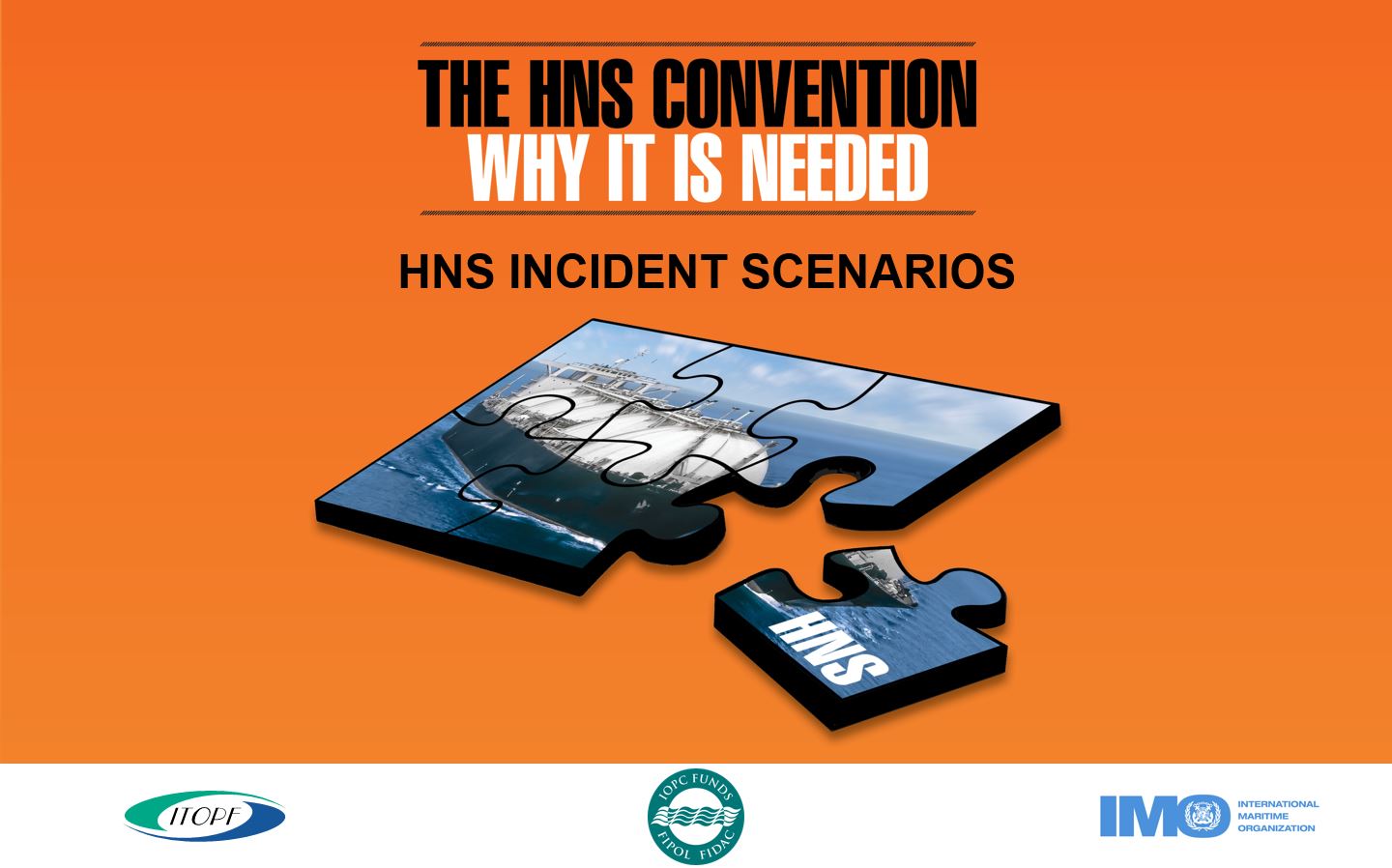HNS Convention implementation
PowerPoint presentation on HNS Incident Scenarios
The presentation is a tool intended for use by decision-making authorities within Governments who are working with industry stakeholders to become parties to the HNS Convention. The presentation outlines specific incident scenarios and the consequent impacts, risks and costs. This illustrates the benefits of the compensation regime which would operate under the HNS Convention.
The presentation may be freely downloaded and used for non-commercial purposes, but may not be changed, altered or modified in any sense which would be a breach of existing copyright.
Please notify hns@imo.org to let us know when and where the presentation has been used and any feedback.
Brochure on why the HNS Convention is needed
The IMO, IOPC Funds and ITOPF have produced a six-page brochure that explains to States the purpose and benefit of the HNS Convention and encourages IMO Member Statesto take the next steps to ratify or accede to the Convention.
Background information
The HNS Convention was adopted by an international conference in 1996 and is based on the highly successful model of the Civil Liability and Fund Conventions which cover pollution damage caused by spills of persistent oil from tankers. As with the original oil pollution compensation regime, the HNS Convention will establish a two-tier system for compensation to be paid in the event of accidents at sea, in this case, involving hazardous and noxious substances such as chemicals. However, it goes further in that it covers not only pollution damage but also the risks of fire and explosion, including loss of life or personal injury as well as loss of or damage to property.
Tier one will be covered by compulsory insurance taken out by shipowners, who would be able to limit their liability. In those cases where the insurance does not cover an incident,or is insufficient to satisfy the claim, a second tier of compensation will be paid from a fund, made up of contributions from the receivers of HNS. Contributions will be calculated according to the amount of HNS received in each Party in the preceding calendar year.
HNS are;defined by reference to lists of substances included in various IMO Conventions and Codes. These include oils; other liquid substances defined as noxious or dangerous; liquefied gases; liquid substances with a flashpoint not exceeding 60°C; dangerous, hazardous and harmful materials and substances carried in packaged form; and solid bulk materials defined as possessing chemical hazards. The Convention also covers residues left by the previous carriage of HNS, other than those carried in packaged form.
The Convention defines damage as including loss of life or personal injury; loss of or damage to property outside the ship; loss or damage by contamination of the environment; the costs of preventative measures and further loss or damage caused by them.
The Convention introduces strict liability for the shipowner and a system of compulsory insurance and insurance certificates.
By 2009, the 1996 HNS convention had still not entered into force, due to an insufficient number of ratifications. A second international conference, held in April 2010, adopted a Protocol to the HNS convention (2010 HNS Protocol) that was designed to address practical problems that had prevented many States from ratifying the original Convention.
Once the 2010 HNS Protocol enters into force, the 1996 Convention, as amended by the 2010 Protocol, will be called “the International Convention on Liability and Compensation for Damage in Connection with the Carriage of Hazardous and Noxious Substances by Sea, 2010.
